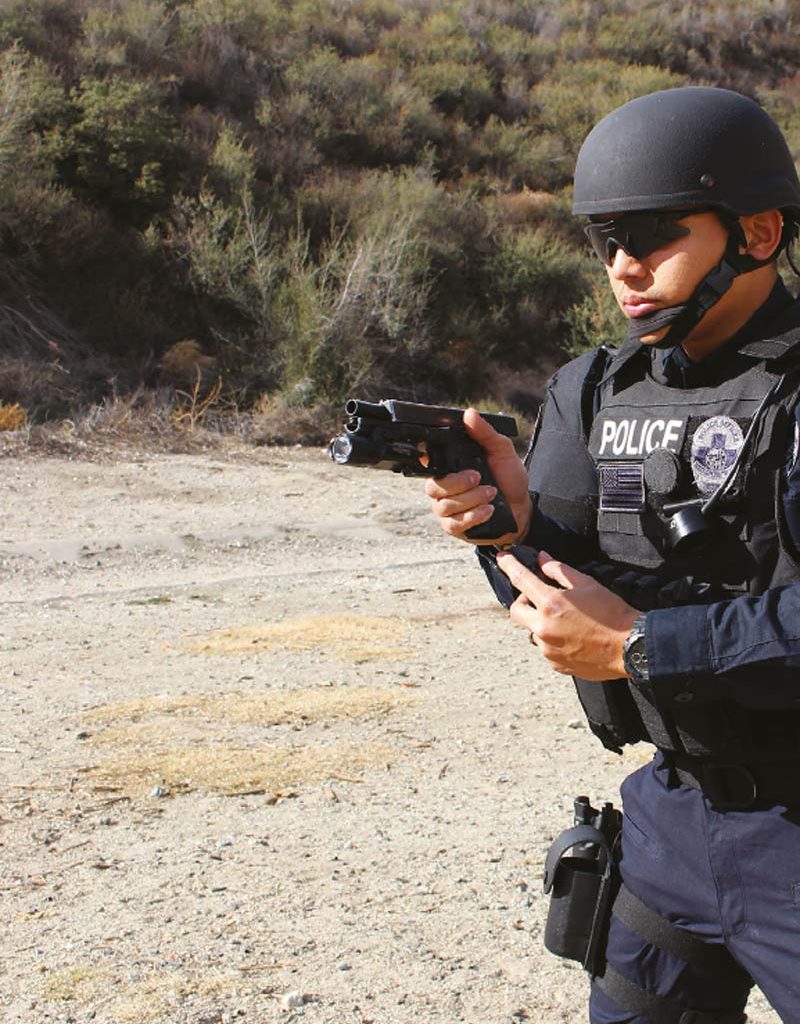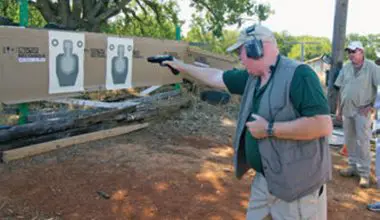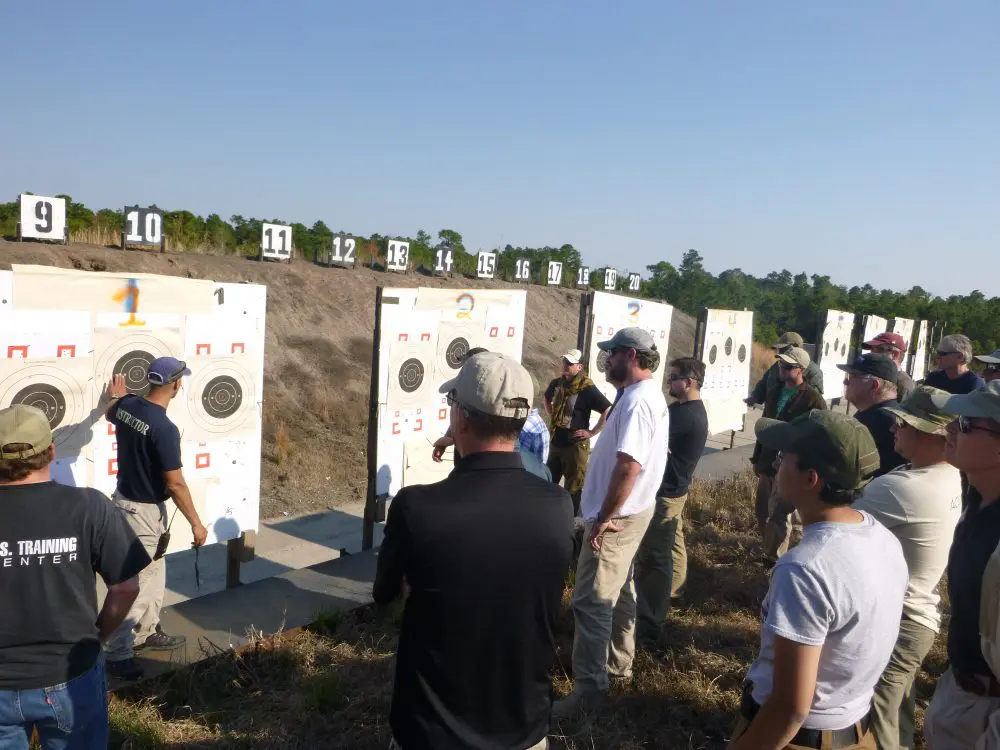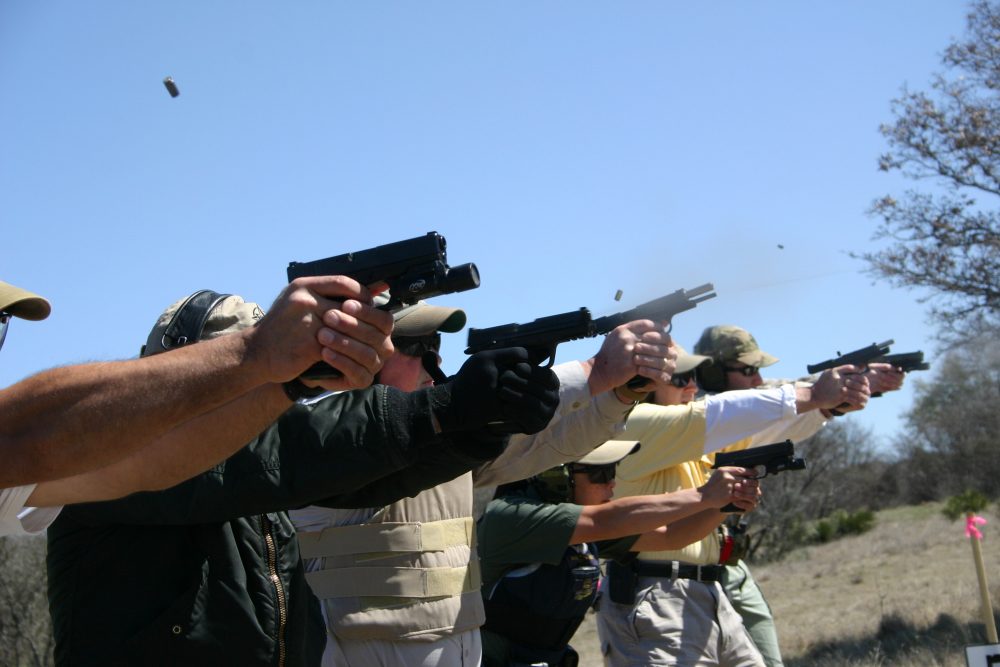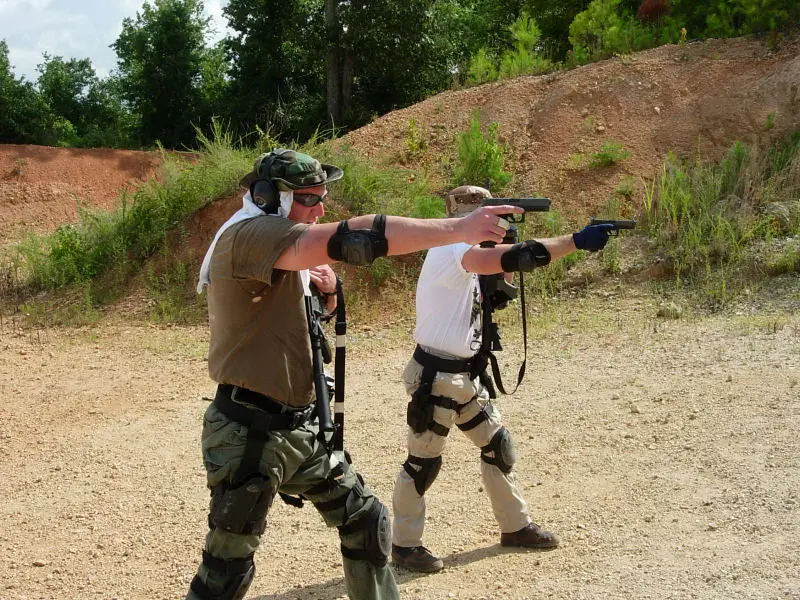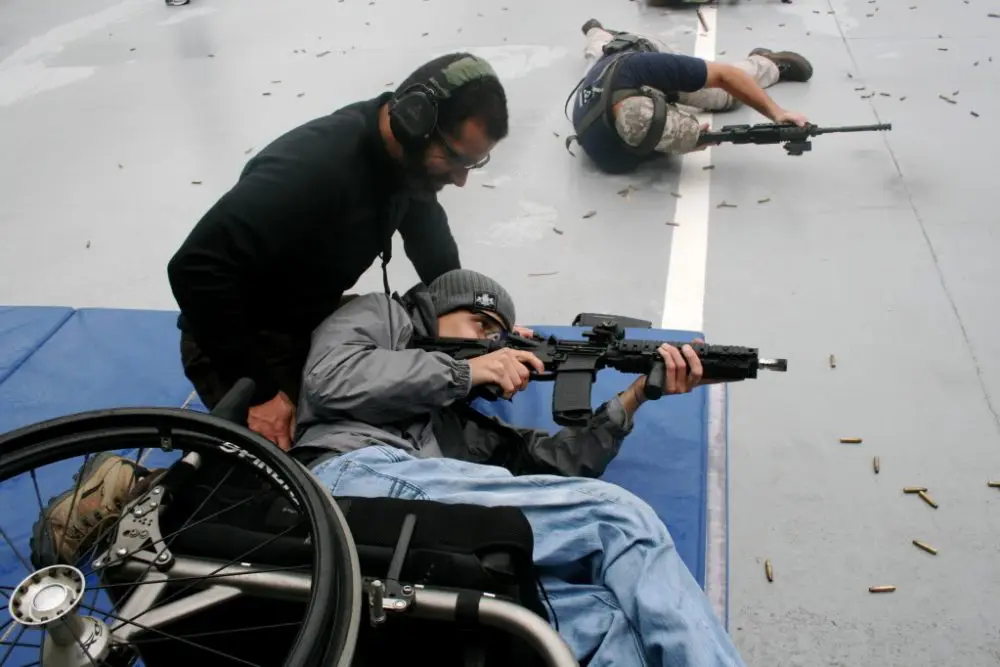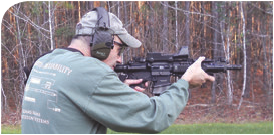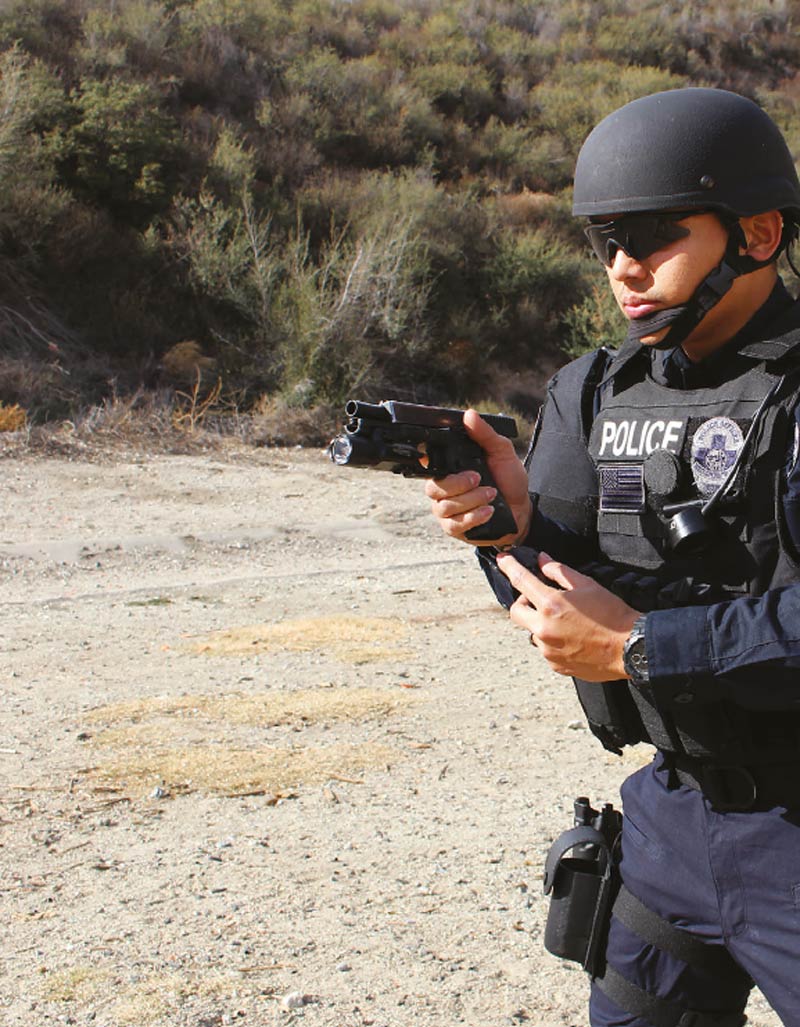
Pistol ready positions and reload positions are an ongoing topic of debate. We’ve undoubtedly come a long way since the cupand- saucer grip or emptying brass into the support hand during revolver reloads. We all recognize our tactics and training must maintain a high standard and we cannot afford to become stagnant.
However, reinventing the wheel with dangerous or tactically unfeasible pistol positions is worse than becoming stagnant. Tried and true, tactically accepted techniques are being replaced by techniques lacking justification and ignoring common sense. The trends of high inboard pistol reloads and lack of muzzle control are not tactically acceptable.
I think we can all agree the most dangerous part of any weapon is the muzzle and the most vulnerable part of the human body is the head. Common sense tells us muzzles don’t belong near our head, in our face or pointed toward teammates. Despite the existence of time-proven techniques, tactically accepted manipulation positions are too often being replaced by high muzzle ready positions and reloads.
Shooters have been conducting speed reloads with a slight inboard cant for years. For many shooters, the slight deviation of the muzzle feels more natural and enables better access of the magazine release. Some shooters associate high inboard reload positions with aircraft security personnel, and I have heard shooters call this technique the “air marshal reload” on a number of occasions.
Table of Contents
“AIR MARSHAL RELOAD”
The advent of the U.S. Air Marshals program, training, and pistol qualification course certainly required thinking outside the box. Engaging a threat in the cabin of an aircraft presents unique problems, as scores of non-combatants are up range, downrange, and all around you. Weapon manipulations cannot be conducted parallel to the deck at the heads of passengers, nor toward the deck toward the aircraft control systems.
If you were on an aircraft, positioning your pistol in front of you and parallel to the deck orients the weapon at head level of everyone onboard the aircraft. With a deviation of the weapon slightly higher in front of the shooter’s chest and muzzle pointing 30 to 45 degrees upward and inboard, the pistol is now pointed away from passengers’ heads and toward the overhead luggage racks. If a mechanical discharge or negligent discharge occurred, the errant round would travel away from non-combatants and potentially into the overhead luggage compartment.
Even if the round struck the skin of the aircraft, no massive structural issue would result. The cabin would simply depressurize. Either way, the round would travel away from passengers, which enhances safety in this particular environment.
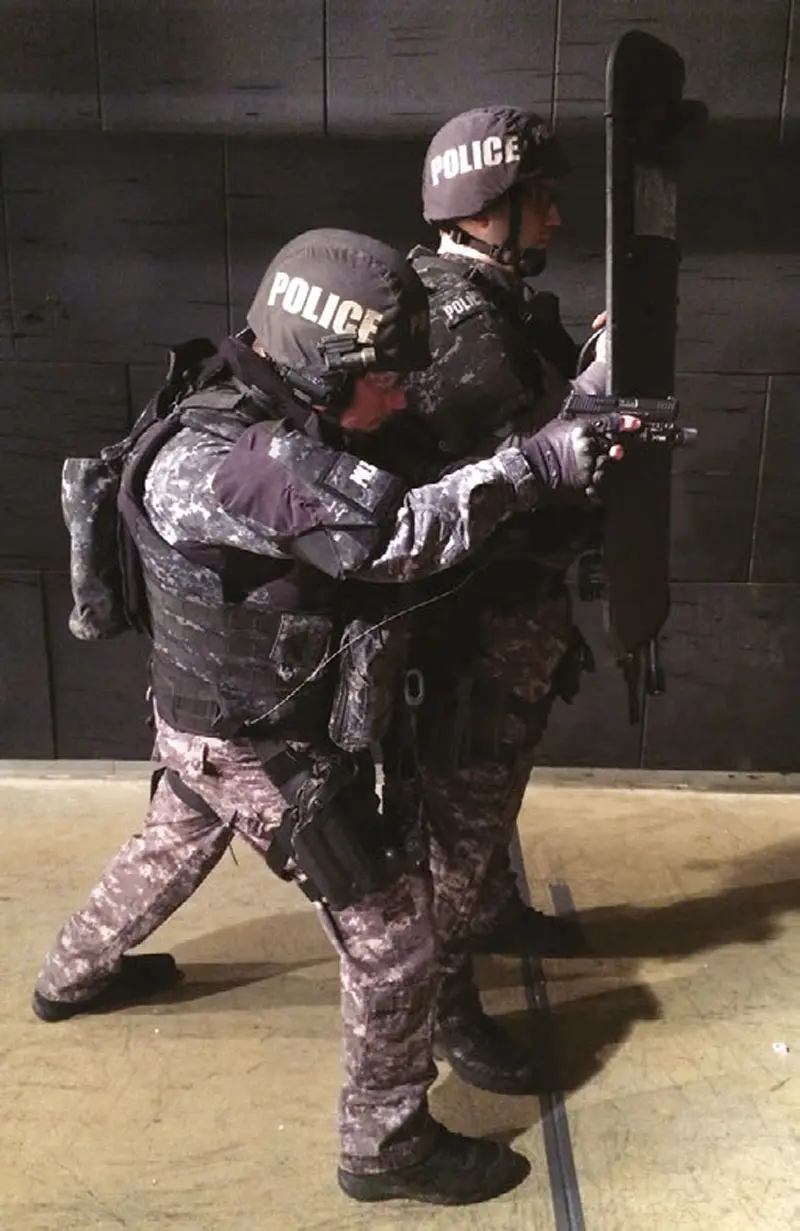
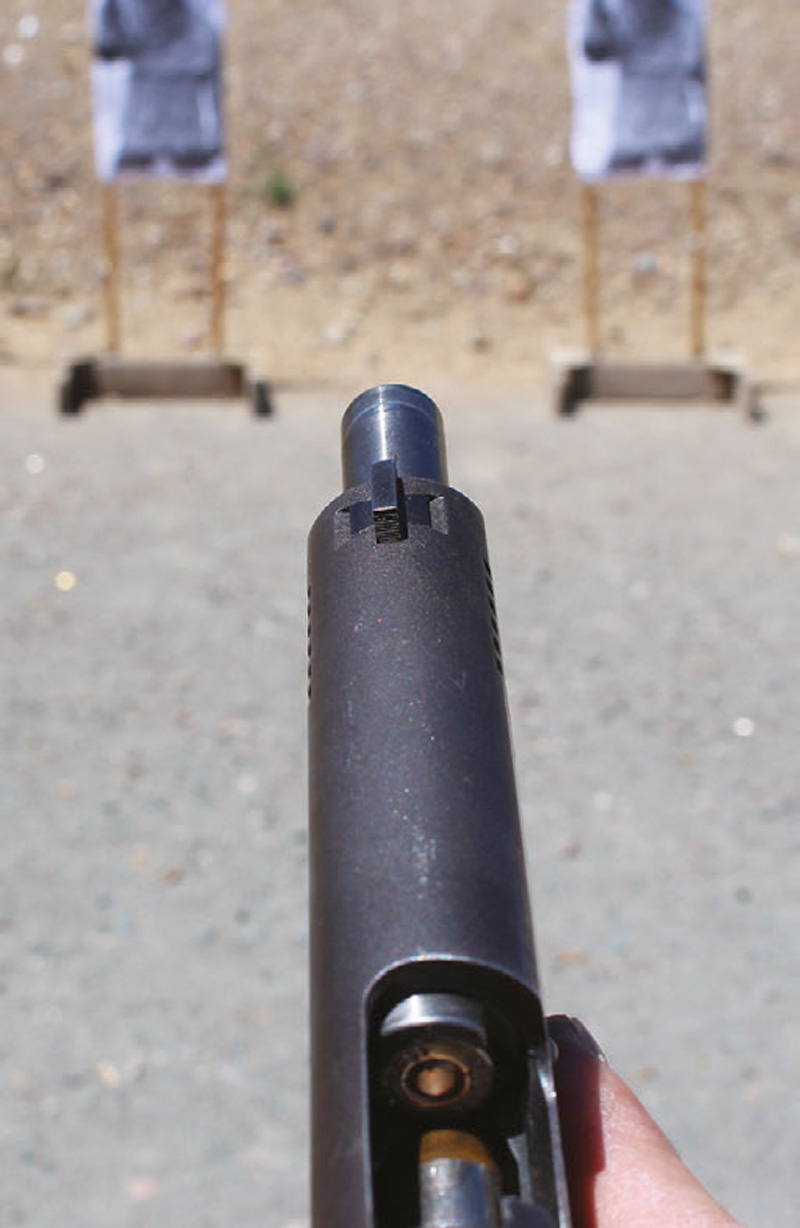
WEAPON-IN-YOUR-FACE RELOADS
Unfortunately, the slight inboard reloading technique continues to grotesquely morph over time, with the erroneous justification of “This is my workspace.” Shooters maneuver the pistol sideways in front of their face, 90 degrees inboard and 45 degrees into the air. There is no argument that could convince me this is smart, safe, or tactically feasible.
Positioning a pistol sideways in front of your face obviously causes the pistol to be in close proximity to your head and face, toward teammates and toward other shooters on the line and, despite all arguments, it just doesn’t work. This is not your “workspace.”
I’ve heard a shooter describe their workspace as “the space from your face where you can read the date on a dime.” This particular statement perplexes me and I’m curious how people even come up with these ideas.
Weapon-in-your-face reloads create functional and handling problems in addition to safety concerns. Rather than the magazine well and magazine being directed 90 degrees toward the deck, they are directed at a 45-degree angle. If the shooter fails to release the magazine prior to the pistol being brought high and inboard, magazines are often slowed or prevented from dropping free from the weapon.
When the weapon is high and inboard and the magazine fails to eject, this inevitably causes shooters to lower the pistol across their body or shake the pistol in front of their face. I think common sense tells us shaking a pistol in front of our face isn’t a tactically accepted technique anywhere in the world.
When the pistol is in this position and the shooter uses their support arm to chamber a cartridge, the pistol is inevitably pointed at the inside of their forearm—also a no-go.
Proponents of this reload position say the shooter can better accomplish their reload by looking at the pistol and see their target area by looking around their pistol. I’m not sure how you look at your pistol and around your pistol at the same time while it blocks your view of the target area.
It seems more prudent to simply keep your eyes on the threat and learn to reload without looking. If you cannot reload your pistol without looking at your weapon or equipment, your training and skillset are seriously lacking.
Proponents of this technique also say they want the pistol “back into the fight” as quickly as possible. However, use of the position causes the weapon to be off target. Using tactically incorrect justifications do not validate the technique, and you can’t have it both ways.
Looking through your pistol doesn’t make sense when you should be looking at the threat. Deviating the weapon off target is slower than keeping the weapon on target.
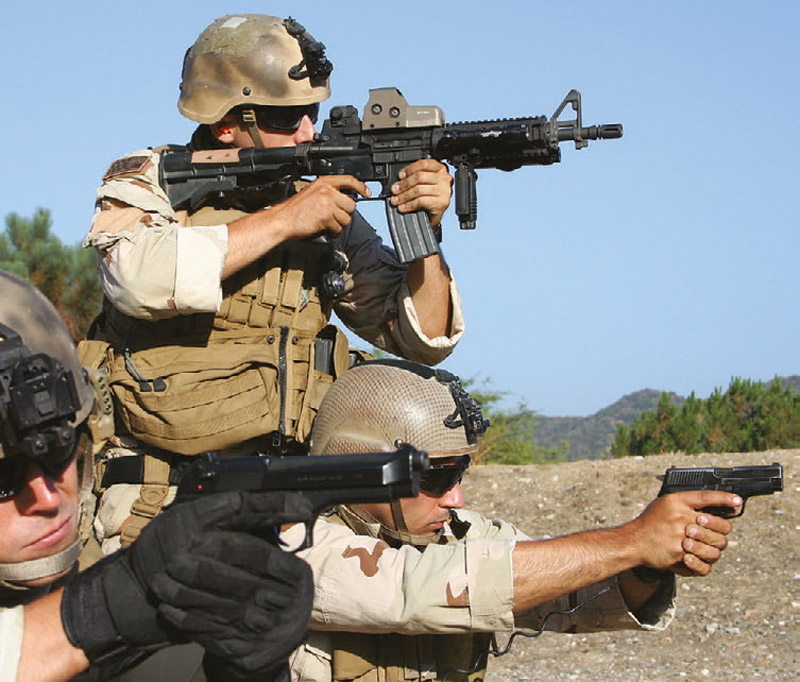
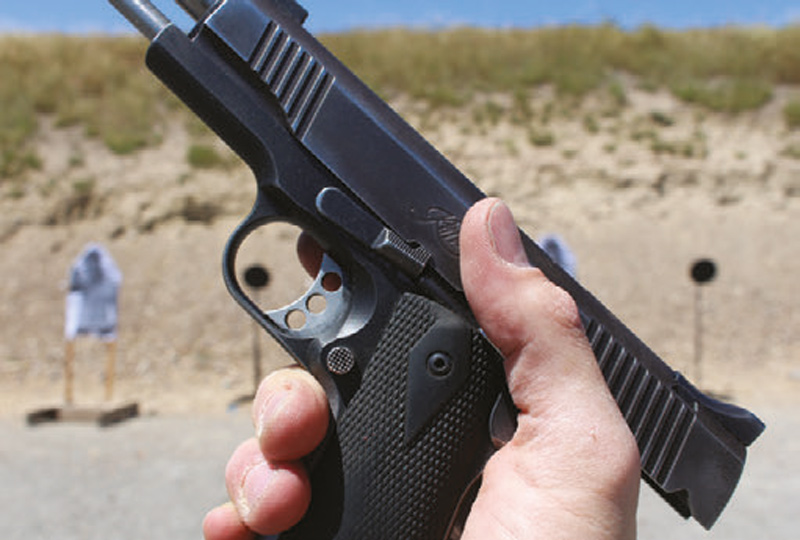
THE COMMON-SENSE RELOAD
The tactically accepted work station or manipulation space for a pistol is with the pistol eight to ten inches in front of the center mass of your body. The weapon is parallel to the deck and the weapon is pointed at the threat. The weapon remains on target and in the fight, pointed downrange, away from the shooter and teammates.
Immediate assessments are made to verify and clear any stoppage or conduct a reload. A slight inboard cant in the angle of the weapon is totally acceptable during reloads and will help facilitate the speed of either emergency or tactical loading. The bore of the weapon remains on target and never out of the fight.
To conduct a “speed” or “emergency” reload, the shooter’s focus is on the target area, and cover is sought immediately. When no cover is available, taking a knee will provide the lifesaving advantage of a 50% reduction in area exposed to return fire. Conduct a quick check to verify the stoppage to ensure the correct immediate action is taken.
Once the stoppage is verified, the magazine is ejected and the magazine well can be canted slightly inboard to facilitate loading. The shooter accesses a full magazine, indexes, inserts, and seats the full magazine. As soon as the magazine is inserted, the shooter can use the slide release or major motor movement of racking the slide to chamber a cartridge.
The same position is used for tactical reloads to prevent shooting the weapon dry. Gunny Jason Bunker coined the term “place, replace, seat, and stow” as the partially expended magazine is removed and a fully charged magazine is inserted in the pistol. Reloads cannot be easily or safely accomplished with the pistol sideways in front of a shooter’s face.
STOPPAGE-CLEARING DRILLS
Stoppage-clearing drills are important parts of any tactical training regimen. A stoppage is described as “any interruption in the continued operation of the weapon.”
Proponents of the high inboard reload have a difficult time explaining how they conduct immediate action to clear a stoppage. They usually give an answer including they would “just know” the stoppage exists or “they would verify a stoppage and return the pistol back to clear it.”
Unfortunately they can’t tell me how to clear the stoppage or how to do so with their pistol in front of their face. When the shooter turns the weapon in front of their face as soon as they experience any problem, the right-handed shooter is now looking at the left side of the slide. There is no way to verify the stoppage, as the shooter cannot see the chamber of the weapon.
I have never seen stoppage-clearing drills conducted with the weapon turned sideways in front of a shooter’s face and I would consider it a major safety violation if an attempt was made. The tactically accepted workspace position of the pistol works for a variety of pistol manipulations, and is in a safe direction while allowing observation of the target area and the fastest return of the gun to the fight.
This cannot be said for weapons-in-front-of-the-face positions because the pistol blocks the target area, immediate action is limited, and the pistol must be reoriented to be brought back into the fight.
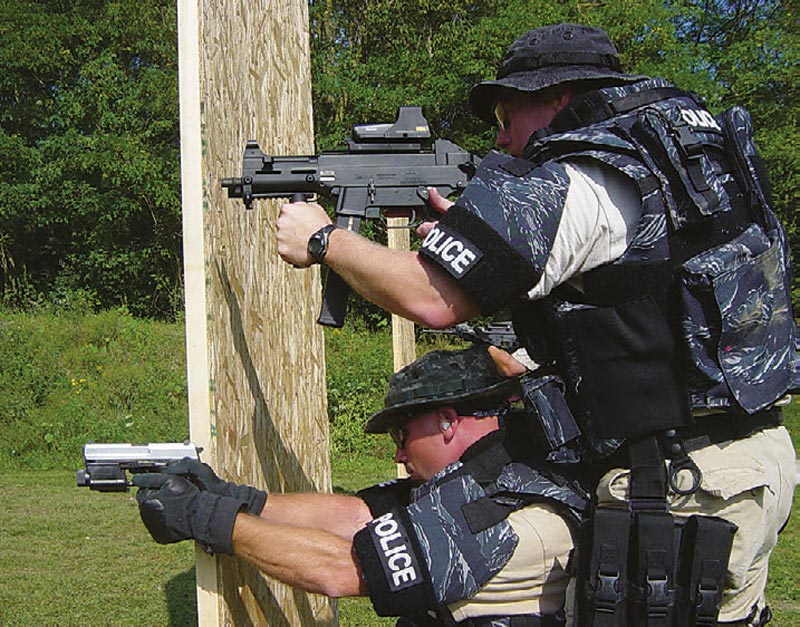
TEAMWORK
Teamwork and two-man team tactics require tactically accepted work-station positions. When working within teams, high-position reloads are dangerous both on the range and operationally.
Techniques such as for sidestep drills, hi-low drills, and hi-low cuts aren’t just for SWAT or special operations teams, and some police departments are integrating shields at the patrol level.
The high reload position inevitably causes the pistol to be pointed at your partner or at the teammate on your right or left. Individual weapons-handling skills must integrate into our tactics, and we can’t allow regressive skills.
Proponents of these reloads have told me the technique is tactically acceptable because “We aren’t SWAT” or “We allow individual techniques,” or “We don’t work in teams.”
These arguments are narrow minded and ignore the reality that police officers, military members, and security personnel work in teams and groups. Police officers often work with partners and in teams, and are sent to violent calls with multiple officers.
Law enforcement officers are trained to initiate action against an active shooter in small groups, and with as few as two officers. If you think you don’t or shouldn’t form a team as soon as a few friendlies are there to help you, think again.
Team tactics are valuable, will increase your operational ability, and will save your life. You can’t place teammates in danger with your poor weapons handling. In any example, if you think you are exempt from tactically accepted and safe practices, you aren’t.
SUMMING IT UP
Our tactics, techniques, and procedures should be consolidated and simplified to increase operational effectiveness and safety. Real-world safety and muzzle control apply to both training and operations. There is no distinction between the two when it comes to weapons safety.
As I mentioned above, the tactically accepted, orthodox pistol reload and manipulation position is eight to ten inches in front of the center mass of your body with the weapon parallel to the deck and the weapon directed toward the threat.
In this position, emergency reloads, tactical reloads, and stoppage drills can all be conducted quickly and safely with our eyes remaining on the target area and keeping our weapon in the fight. When conducting reloads during two-man team tactics, the weapon cannot be brought toward the shooter’s body as it will endanger the teammate in front of the shooter. Under no circumstances can high reload positions be used because they cause the weapon to be pointed at our teammates.
We must recognize our world is ever changing and our tactics are always evolving. But this is one area of tactics that does not need to be changed. There is no reason to replace standard work-place positions with techniques providing no tactical benefit and only resulting in tactical problems and safety violations.
Keep your weapon on target and in the fight!
